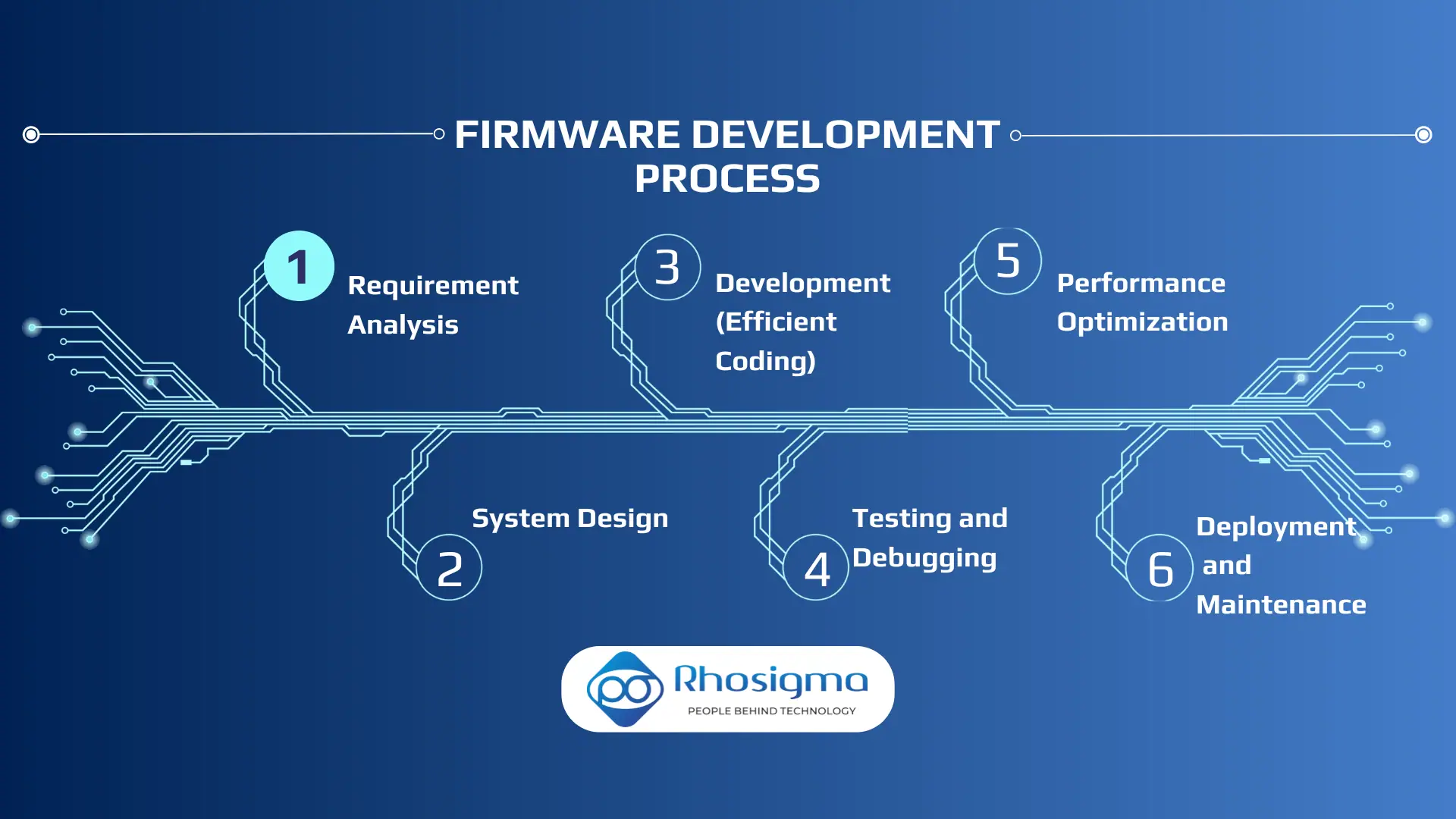Firmware Development Process: Challenges and Best Practices

Standard firmware development process and best practices for electronic technology.
Firmware plays an outstanding role in electronic devices, with its function as a bridge between the hardware and software. In this all-inclusive guide, we will consider the process of developing firmware, accompanied by some valid hints and steps for conducting outreach in this complicated task.
What is a firmware?
Firmware is the type of software, developed for a hardware device, which makes it functional. Firmware, in general, is not comparable to common software since they have a specific hardware customization; hence it remains the same in each device unless updated.
Steps in the Firmware Development Process
1. Requirement Analysis
- Start with a clear understanding of the project requirements:
Functionality: What tasks should the firmware accomplish?
Hardware Specifications: Which microcontrollers or processors are used?
Performance Criteria: What are the speed, memory, and power consumption maximum limits?
User Needs: Are there any specific user requirements and constraints?
This phase sets the foundation for a successful project, ensuring all stakeholders are aligned.
2. System Design
In this phase, plan out the entire system:
- Hardware Interface: This will define how to interact with all of the hardware components in the firmware.
Software Architecture: Structure your code to be as maintainable and as modular as possible.
Memory Layout: Plan how memory will be used and managed.
Detailed design documents help to smooth development and prevent future issues.
3. Development (Efficient Coding)
The actual coding begins here:
- Setting Up Development Environment: Selection of proper tools and platforms.
Writing Code: Use languages such as C and C++, for efficient, low-level control of hardware.
Testing Modules: Each part of the code that is written should be continuously tested.
The process of development is iterative. Mostly, it takes multiple cycles to code and test.
4. Testing and Debugging
Thorough software testing is important for the reliability of firmware:
- Unit Testing: It is the testing of individual components.
Integration Testing: The components interact efficiently with each other.
System Testing: Tests the functionality of the whole system.
Debugging tools such as oscilloscope and logic analyzer help to detect and rectify hardware-related bugs.
"Testing is not an option; it is a necessity to ensure the integrity and functionality of the firmware." - Rhosigma Engineers
5. Performance Optimization
Firmware to be optimized to deliver improved performance.
- Memory Management: This involves managing the memory effectively to avoid run-time deadline issues.
Code Compression: The code is compressed to fit in the low memory.
Execution Speed: The code execution time can be optimized to optimize the processing rate.
Optimization is indispensable, mainly with small-capacity devices.
6. Deployment and Maintenance
- Deploy the firmware onto the hardware:
Firmware Flashing: Transfer the ready firmware to the device.
Final Testing: Run the final tests to check that everything is working as per expectations.
Updates: Consider upgrades and maintenance in the future.
Regular maintenance will keep the firmware secure and functional over time.
Challenges of Firmware Development
The development of firmware has some of its own challenges:
- Hardware-Software Compatibility: It needs to work with various hardware components.
Performance in Real-time: Debugging on low-level code, which adds to the complexity.
Timing Requirements: Meeting stringent timing requirements also presents a challenge.
Power Management: Trade-off between performance and power conservation.
Best Practices of Firmware Development
- Early Testing: Integrate testing throughout the development process to catch issues early.
Comprehensive Documentation: Detailed record of design and code so that troubleshooting can be made easily accessible.
Modular Design: Build the firmware in modules to simplify testing and maintenance
By following these steps and best practices, you can ensure a smooth and efficient firmware development process, transforming your ideas into reality with precision and excellence.
Firmware development for embedded systems is a complex but rewarding process and lies at the heart of many electronic devices.
At Rhosigma, we have the assurance about the quality, reliability, and custom firmware development solutions that we can deliver with the view of any specific needs.
Whether you're working on a new project or updating an old one, we will help you at every single step.
Learn more about our services and how we can move your project forward.
Additional Resources
For those looking to delve deeper into firmware development, consider exploring these resources:
1. Embedded Firmware Development Skills and Expertise.
2. Understanding HART Protocol: Functionality, Advantages, and Layers.





